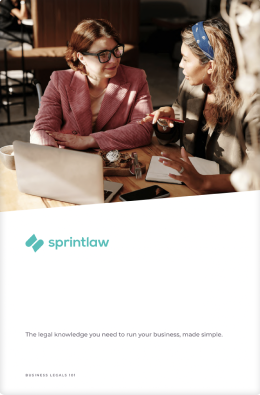Contents
A website can serve many functions. It can be a forum for creative expression, a place to catch up or interact with your mates, or the source of your livelihood.
Regardless, no one likes having their ideas and content stolen. Unfortunately, the theft and repurposing of intellectual property from websites is common.
In this article, we will explain how your website is protected, how you can get more protection and steps to take if someone does copy your website.
But Doesn’t Copyright Apply?
This is only partly right. Copyright applies automatically in Australia to original content. There are some circumstances in which your copyright may expire but, unless you created your website 50 plus years ago your copyright is probably still valid.
Importantly in the context of a website, copyright protects how you present the idea, not the idea itself, so if you have an original presentation of an idea you are most likely covered. However, copyright may not apply to your entire website, only part of it.
Read on to get an idea of how you may be protected.
Is My Website My Intellectual Property?
Legally, intellectual property acts almost as an umbrella term for a number of legal protections that can apply to original work. One of these is copyright which protects creative expression of ideas as discussed above.
In your website there will be many different aspects of intellectual property – the content itself, your logos and brand, original images and any code you may write as part of the website as a few examples. There may be some things in your website that will not be included as intellectual property.
For example, anything that is not originally expressed like third party links will not be covered by intellectual property law. Below we are going to run you through a couple of standard parts of a website that are counted as intellectual property.
Business Names
Your business name is not automatically protected as intellectual property. In Australia, business names are usually registered with ASIC – the Australian financial regulator. ASIC tells us that even after you register your business name with them it does not necessarily mean you have an exclusive right to that name. Your business name is important, you spend a lot of time and effort thinking of a business name and having it copied can be damaging. Thankfully, there are ways that you can protect your business name and we will explore this below. For now, keep in mind that your business name is not automatically protected.
Images
Some images will be automatically protected by copyright law. However, these images have to be originally created and then posted to your website. If you are using stock images from a google search on your website and someone else ends up using those, copyright will not apply.
Content
Your website content is likely to be counted as original. However, there are many websites who compete with each other who have the same subject matter. Whiet it may be easy to determine if someone has blatantly mirrored your website content, it may be harder to prove if you suspect someone has copied part of your website.
The main question that will be examined is: has a substantial, distinctive or essential part of the original material been copied? This is a question for the courts but if you suspect someone has copied your website content you should keep this in mind.
Proactive Steps To Protect Your Website From Being Copied
As we explored above, there are some automatic protections that will help to safeguard your website. That said, you can be more proactive about protecting part of your website. If you take proactive steps then more options will be available if someone does end up copying part or all of your website.
Registering A Trademark
Trademarking is an effective weapon in the fight against intellectual property theft. You register a trademark for your business name and/or logo. As covered above, your business name is not automatically protected, even if you register it with ASIC when setting up your business.
A trademark will give you exclusive rights to your brand, logo or name for up to ten years. If you have a trademark and someone copies what it protects you will have a variety of actions against them. The catch is that applying for a trademark is a rigorous process.You have to apply to intellectual property Australia and they will consider whether or not you qualify for a trademark.
Highlighting Your Copyright
In Australia, there is no registration system for copyright. There are still proactive steps you can take to establish and signal your website is protected by copyright. This can act as a deterrent and also be used later to indicate you did not consent to someone copying your work.
The first step you should take is having a copyright disclaimer clearly displayed on your website. A copyright disclaimer lets your website visitors know you do not want them repurposing your website content or images without permission.
The second step is to have a section in your terms and conditions which states that the website content is yours and should not be copied without permission. Terms and conditions are useful in this way because they are essentially a contract between yourself and the website user. You are establishing how your users should interact with your website. You should clearly demonstrate in your terms and conditions that you do not intend to allow your website to be copied or duplicated.
Help! Someone Has Copied My Website
When you have something nice, people are going to try to copy you. Even if you have been super proactive, bad things can still happen. Being aware of the non-legal options to resolve the issue is important. It is also good practice to try to resolve your disputes without the law when you can, it can save time and money and also look better to a judge if things do end up in court. In this section, we are going to run you through four initial steps to take if you find out someone has copied your website.
Document Your Site And Where It Has Been Copied
Screenshots are your friend in this situation. Before sending any strongly worded emails, you want to make sure you have evidence to prove that your website has been copied. Document both your own site and the parts of the site that you think has copied you. Having this ensures that if something shady is going on, the owner of the ripoff website cannot back track or claim it did not happen. When you are taking your next steps it is also good practice to document all interactions and communication you have in trying to resolve the situation.
Contact The Website Owner
The next step is to get into contact with the owner of the website that has copied your content. Let them know that you think they have copied your website without permission. Notify them of any proactive steps that you have taken to protect your website. Clearly indicate to them where the content you think has been stolen is on their website and then indicate its presence on your website. Lastly, ask them to remove the stolen content as you did not, and do not, give them permission to use it.
Contact The Domain Host
Any website operates out of a domain. The domain host provides the infrastructure in which websites operate. They are like the landlord and website creators are the tenants. If you have a problem with your neighbour in an apartment complex, sometimes you go to their landlord to try and solve the problem. The same principle applies here. There are a range of tools on the internet which will help you identify the domain host. Once you have found them, you can contact them, explain the situation, provide your proof and ask them to take down the offending website.
Contact The Search Engine
Search engines do not have the same power as domain hosts. They cannot remove websites from the internet. However, how many websites have you found without Google? Search engines like Google already penalise content that seems unreliable or uncredible. Major search engines like Google and Bing have complaints pathways regarding copyright infringements.
Legal Options
If you have tried the above steps and are not getting results, there are some legal options.
Letter of Demand
A letter of demand needs to be drafted by a lawyer. A letter of demand in this situation would outline the intellectual property right infringement, the lack of consent and demand that the website be removed. A letter of demand is usually going to be the first of any legal step. It gives the respondent an indication that you are serious and an opportunity to respond.
Court Injunctions
You can always apply for a court injunction. However, this should be your last resort. This is because court proceedings and litigation are costly and success can never be guaranteed. If you are successful a court injunction operates to stop any actions that have been determined to be in breach of copyright or other intellectual property protections. Make sure to talk with a lawyer about your prospects of success if you are seriously considering this option.
Still Concerned?
If you are worried about protecting your website, we can help you prevent bad things from happening. For example, we can help you draft up contracts for your website, or assist in registering a trade mark. We have the expertise and experience to advise you on the best course of action.
Reach out to our friendly team on 1800 730 617 or at team@sprintlaw.com.au for a free, no-obligations chat.
Get in touch now!
We'll get back to you within 1 business day.












